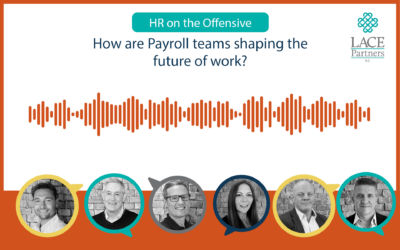In this week’s blog our in-house payroll ‘doctor’ Chris Kirby tells us how a holistic approach to payroll diagnosis can boost efficiency, experience and return on investment. Read on to learn about common misconceptions on the causes of payroll problems – and how you can avoid them.
As a payroll professional for over two decades now (the bulk of which has been spent in operational environments) I can safely say I have heard three overarching phrases more than I’ve heard anything else:
- “Our Payroll is broken”
- “Payroll is always wrong, we need a new system”
- “Our payroll provider makes so many errors we need to issue an RFP”
But is it? And do you?
I can confidently say that on the occasions I have heard these statements – more often than not – the payroll system was working exactly as it should. The provider was processing what they received, and Payroll wasn’t broken at all. What is often the case is that the data held in our upstream systems is inaccurate, or information arrives at payroll unvalidated and incorrect (or not on time). On top of this, processes and policies can change without the accommodating updates being mirrored in the payroll system. In some cases payroll operations are set up for failure due a lack of focus on governance and controls, resulting in an over reliance on manual involvement for processes that should be automated.
Are you looking at the broader picture?
In the interest of balance, it is also true of course, that in some cases the payroll is indeed broken. The provider isn’t providing a robust or efficient service whether commercially or practically. In these cases an RFP is indeed the best course of action. I would like to focus on the broader picture though as it is something that at LACE Partners we see, with several organisations questioning their payroll provider as a result of the pandemic. There are many reasons for this:
- Companies themselves have had to restructure, disrupting services and creating unsustainable manual processes and workarounds
- Emergency protocols hit Payroll hard and emphasised existing inefficiencies while also creating unsustainable additional expectations of payroll teams
- The emphasis on agility of technology, processes and the workforce to overcome emergency protocols has shone the spotlight on the people, partnerships and processes in Payroll
- Companies have merged, been acquired, moved locations, or closed offices quickly resulting in multiple sets of processes and solutions being adopted by payroll teams taking on new businesses with no time to harmonise
- The increased reliance on Payroll in providing accurate and on-demand data to inform strategic decision making has diluted the time payroll resources are able to focus on the job that hasn’t gone away.
The truth is, in many cases, the underlying problems have always been there. The pandemic has just led to organisations recognising them through the spotlight, or even through asking the questions for the first time.
It is very easy and understandable that the natural reaction to these problems is to think your technology should be doing more, and although true that this may be the case, it is more likely that the solution will be a cumulation of multiple inefficiencies. It is therefore imperative that you truly understand the root cause of your issues rather than reacting to a symptom. It is also critical that you ensure everything is optimised and working in sync. Fixing the steering wheel of a car doesn’t make the engine the work but fixing the engine when the steering wheel is broken won’t help you drive effectively either.
So, what is “everything”?
Firstly, let’s explore what most people think “Payroll” is. Unfortunately payroll is still seen by many people as the big button pressed once a month; if the output isn’t what they expected payroll must be broken.
Those who sit closer to Payroll may also still see it as very much the technology; the calculations, documents, and interfaces.
The truth is Payroll is far more than that and can also differ from organisation to organisation. Here is an overview of how we at LACE always look at Payroll:
- Governance
- Capability/Operating model
- Payroll
- Process
- Data
- Technology.
Covering all these themes ensures we explore everything that could be causing your payroll challenges. Whether your operating model is setting you up for failure, you have insufficient governance in place, your processes are inefficient, your data is not being managed properly or your technology really is the root of your issues; taking a holistic approach is important. By assessing your Payroll function from end-to-end you can build a full picture of your challenges and engage upstream with other functions that may be creating the problems. You are then able to prioritise the implementation of fixes, improvements or technology to ensure your investment realises the benefits it is intended to.
The importance of considering the employee experience
Another very important angle to consider here is employee experience. The reality is it is often feedback from employees via line managers, HRBP’s, or direct into your teams that dictates the tone of how ‘good’ your payroll is. Alongside your KPI’s this tone dictates whether payroll is operating effectively.
Once you have the full picture and understanding of your payroll challenges it is important to overlay what your employees are telling you they expect before committing to the remediation. If you were to focus on a particular underperforming KPI for instance you could impulsively go to the market, select a new provider that excels at what you are struggling with and implement a new payroll solution. If you haven’t asked or listened to what your employees expect it could be at this point you realise what you were getting from your previous provider.
Lastly, and I’ve touched on this briefly above, it is also possible that some of the issues that only manifest in payroll stem from upstream issues. Missing governance, processes, data, or capability in Recruitment, Onboarding, HR, or Reward for instance. Knowing where the issues truly sit in your payroll function enables you to engage with your counterparts in these areas and address the source of the problem rather than continuing with manual processes and/or errors in payroll.
It is fairly easy to identify symptoms because we live them every day, but can you confidently say you know what the cause of your challenges are?
What are your biggest challenges? We reached out to our LACE network and got this response – does that resonate with your biggest challenges?

Speak to the team:
If any of the above payroll challenges are impacting you right now, or if you would like some help diagnosing the causes of any other payroll challenges you are facing, Chris and the team would be happy to help. Get in touch via the form below or see our payroll services here.






